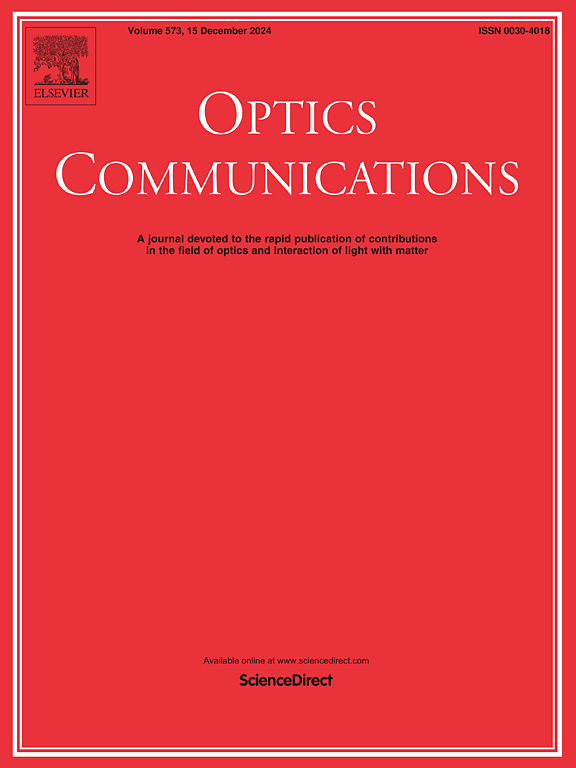Fast localization and single-pixel imaging of the moving object using time-division multiplexing
IF 2.2
3区 物理与天体物理
Q2 OPTICS
引用次数: 0
Abstract
When imaging moving objects, single-pixel imaging often suffers from motion blur. This paper presents a novel method for simultaneous high-speed localization and anti-motion blur imaging of fast-moving objects based on single-pixel imaging. The proposed approach leverages geometric moment patterns and Hadamard patterns alternately, encoding the object's positional and image information through time-division multiplexing. During the reconstruction process, the object's position is first extracted, followed by obtaining the image using a motion-compensated single-pixel reconstruction method. As a result, the method achieves both high-frame-rate localization and motion-blur-free imaging. Experimental results demonstrate that for an object moving at an angular velocity of up to 0.5 rad/s relative to the imaging system, the proposed method achieves a localization frequency of 5.55 kHz and progressively reconstructs a motion-blur-free image with a higher signal-to-noise ratio. This approach holds promising potential for applications in single-pixel imaging of fast-moving objects.
求助全文
约1分钟内获得全文
求助全文
来源期刊

Optics Communications
物理-光学
CiteScore
5.10
自引率
8.30%
发文量
681
审稿时长
38 days
期刊介绍:
Optics Communications invites original and timely contributions containing new results in various fields of optics and photonics. The journal considers theoretical and experimental research in areas ranging from the fundamental properties of light to technological applications. Topics covered include classical and quantum optics, optical physics and light-matter interactions, lasers, imaging, guided-wave optics and optical information processing. Manuscripts should offer clear evidence of novelty and significance. Papers concentrating on mathematical and computational issues, with limited connection to optics, are not suitable for publication in the Journal. Similarly, small technical advances, or papers concerned only with engineering applications or issues of materials science fall outside the journal scope.
 求助内容:
求助内容: 应助结果提醒方式:
应助结果提醒方式:


